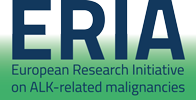Indeed, ATP-competitive inhibitors of ALK have been shown to induce tumour cell death. The most advanced clinical compound of this class of drugs is Crizotinib, an ALK and c-Met inhibitor that is currently under clinical trial for the treatment of ALCL in the USA, China and Italy (NCT00939770, NCT01606878, NCT02487316, NCT02419287). However, it is known from experience of other ‘kinase inhibitors’ like Crizotinib, that mutant forms of the ALK protein will evolve which are resistant to the inhibitor and hence disease relapse ensues. In this vein, other ALK inhibitors have been designed by many companies and undoubtedly will enter the clinical arena in time. However, it is also possible, that by understanding the mechanisms employed by hyperactive ALK signaling towards transformation and cancer cell survival we will be able to design other drugs that will act synergistically with ALK inhibitors to prevent disease recurrence.
Breast implant-associated Anaplastic Large Cell Lymphoma (BIA-ALCL) is a relatively indolent form of ALCL that develops as a seroma surrounding the breast implant but contained within the fibrous capsule but can also involve the fibrous capsule. The large majority of cases can be cured by implant and capsule removal although a minority of patients develop an aggressive form of this disease that requires intensive chemotherapy and can result in death. All cases of BIA-ALCL that have been reported to date have been associated with the presence of a textured rather than a smooth implant posing questions as to its aetiology. Various hypotheses have been presented ranging from chronic inflammation to bacteria or implant particulates, to carcinogenic toxins on the surface of the implants. Whilst all cases of BIA-ALCL reported so far have been ALK negative, the presence of JAK/STAT mutations suggests similar molecular mechanisms of disease pathogenesis. What is clear is that the number of diagnosed cases is increasing exponentially perhaps due to increased awareness and improved diagnosis.


